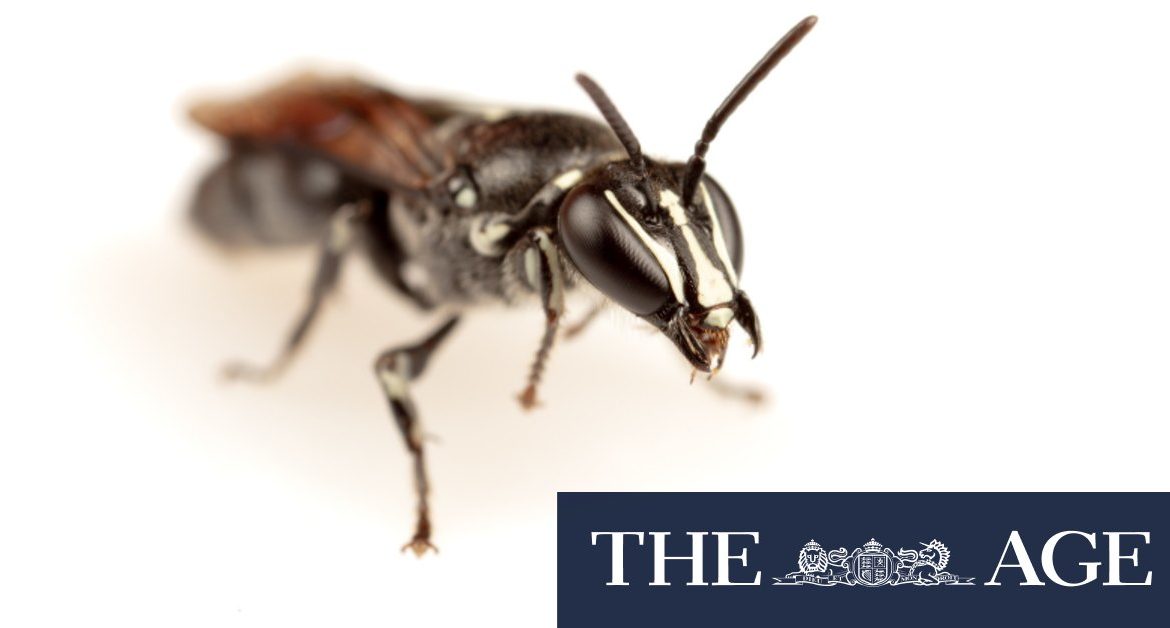Researchers had begun to fear the species was extinct.
Instead, Mr Dorey said it seemed the fact the bees were mostly solitary, plus their preference for particular flowers, meant they appeared to have simply avoided areas where they might be spotted easily.
“It’s very unlikely that they’ll form hives like European honey bees, because most species in their group are solitary, which makes finding them more difficult to find a single bee rather than a hive,” he said.
The rare Australian native bee was seen in a rainforest near Atherton in far north Queensland.Credit:James Dorey Photography
“It might nest in pre-formed holes in trees formed by other insects, or it might chew its own holes. We just don’t know. I’d love to find out though.”
Just six specimens had been sampled by scientists previously, but Mr Dorey managed to get 20 for study.
Gathering the bees was not as easy as the first chance encounter, with Mr Dorey visiting 225 general and 20 targeted sampling sites across NSW and Queensland.
Researchers are now worried the bee might end up extinct anyway because of habitat pressures.
Mr Dorey only observed the species visiting flowers found near tropical or sub-tropical rainforest, on firewheel trees and Illawarra flame trees, which both have distinctive red flowers.
That indicated the bee was a habitat specialist, meaning it was particularly susceptible to habitat destruction.
Loading
“It’s easy to imagine how the clearing of that one little patch of rainforest I found them in up in Atherton would destroy that population.,” Mr Dorey said.
“Or a bushfire raging through – it was only in 2018 that those bushfires went through Eungella [90 kilometres west of Mackay] and burnt that forest.
“I found the species in the area after those fires, but it’s not hard to imagine how with increasing fires in the future, a population could be wiped out.”
Mr Dorey said he was focusing on finding out as much as he could about the bees now he had specimens to examine.
“I’m hoping to do some genetic analyses which can also tell us if the species is threatened, because it can show genetic bottlenecks where a species’ population can collapse,” he said.
The research has been published in The Journal of Hymenoptera Research.
Stuart Layt covers health, science and technology for the Brisbane Times. He was formerly the Queensland political reporter for AAP.
Most Viewed in National
Loading







